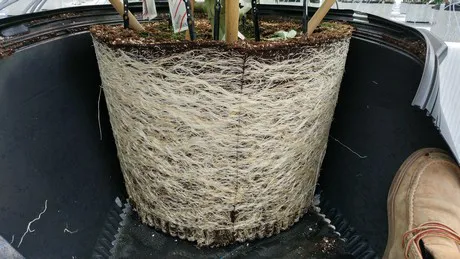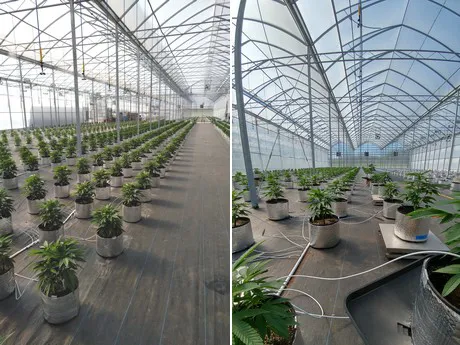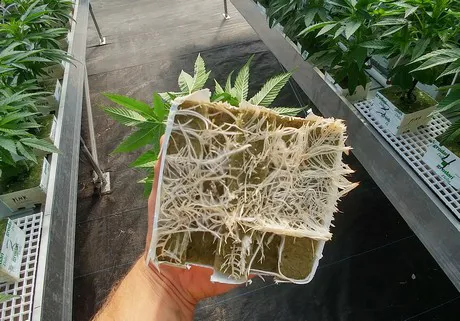The question of standardization invokes numerous definitions meant to clarify what growers should strive for. Of course, the most important thing to understand is what “high-quality flower” really implies. “Growing cannabis can be easy if one does it at an amateur level,” says Mike McKee, Level Ten COO. “However, growing it to its full genetic potential at a large scale is something completely different, which requires a lot of knowledge and sophisticated infrastructure, something that is far more challenging than what the general population initially realized.”
Full genetic potential
According to Mike, each strain has different potential, and it is crucial to understand what that can be. “Aside from maximizing cannabinoid profiles, one should be striving to optimize terpene profiles,” he says. “This is the hardest thing to create during cultivation and further yet maintain through the drying and post-processing processes.” Mike projects that the dried flower category will always remain the most dominant category, but he predicts real growth potential in the full spectrum concentrate category in the future, in other words cannabis concentrates that maintain the complete cannabinoid, flavor and terpene profiles as the input flower used to produce the concentrates. "It will be a more difficult category to participate in because of the need for very high-quality flower inputs to produce desirable full spectrum products," he observes. "Additionally, the lack of understanding around the production processes required to produce full spectrum concentrates on scale increases the difficulty of penetrating this category."
"The market is currently saturated with low-quality flower products, this creating a great opportunity to seek margins in the premium sector and target the connoisseur segment - those willing to pay higher prices for a higher quality. Many inexperienced LPs (licensed producers) have struggled to grab market share as the products they’re offering aren’t of high enough quality to compete with the illicit market,” he explains. “I expect a lot of hard times ahead for those companies until they improve their value proposition by way of lower prices and higher quality”
Lack of standards
And this goes back to the aforesaid lack of standardization, which ultimately prevents growers from relying on a set of rules that would make their output more predictable. “If you look at successful tomato or cucumber growers, they can all somewhat agree on a similar production model that works best,” he points out. “When it comes to cannabis, if you talk to different growers, each of them would have widely different practices. That is to say though, what else would you really expect?” Indeed, Mike remarks that the industry is still too young for standard procedures to be addressed in a meaningful scientific manner. “I think it will be a 10 to 20 year evolution before we have agreeable best practices for scaled cultivation. People naively thought that as soon as this industry began being regulated, that we would have best practices in the blink of an eye. Thing is, this is something that takes a lot of time through ongoing refinement and incremental progress, which is exactly how it’s happened in every other sector.” The concept that bigger is better, capturing first-mover advantage and that being well capitalized will ensure immediate and long-term success is gradually being proven false, according to him.

Long-term sustainability
This is exactly the reason why Level Ten has been especially focusing on long-term sustainability. “We prioritized designing a model that harnesses the sun’s free energy and maximizes the use of our labor inputs to ensure long-term price competitiveness,” says Mike. “But beyond that, cannabis is one of the most challenging horticultural crops to produce to its full quality potential. It poses a new collection of horticultural challenges that requires a very sophisticated facility as far as infrastructure is concerned in order to maintain precise climate control year-round for disease prevention. Beyond the cultivation, the handling of the cannabis after cultivation is critical to producing a premium flower product. Quality is often sacrificed by growers during post-processing because of inadequate product handling and drying solutions. You work so hard during cultivation to maximize terpene, flavor and cannabinoid profiles, only to sacrifice that value created with poor post-processing solutions – that is a devastating outcome. Unfortunately, most growers don’t even realize that they are sacrificing quality, but the reality is, the final flower quality is as much influenced by the post-processing activities is it is by the cultivation component. It requires highly technical and very controlled climate and logistical solutions”. This is arguably the most misunderstood and underestimated component of the entire production cycle according to Mike.

Simplification is key
"One of the keys to growing is simplification, not making things more complicated than they already are.” Mike continues to explain that their semi-closed glass greenhouse is going to have two major grow zones, each of which can handle 8 different strains. “Every strain presents different challenges,” he points out. “This is why it’s important to focus only on a very small selected number of strains per cycle when cultivating. Currently our genetics catalogue includes approximately 45 different varieties, we will always group strains together in grow zones that possess similar flowering periods and cultivation characteristics as it’s essential for successful implementation of automation.”

The other important key element for a cannabis operation in minimizing its costs is to have proper management oversight of the crop. “I think that companies lacking sound oversight are going to have a difficult time in the near future,” he says. “Especially those operators that have not scaled up responsibly. This is why I think that some of today’s smaller to mid-size companies will eventually grow into larger successful companies through executing more disciplined growth strategies. They will eventually capture market share by offering consumers more appealing value propositions, something the larger companies that have scaled too quickly will struggle to provide. The industry will likely experience some market fragmentation over the next few years as more companies continue to enter the space with a heightened focus on profitability by way of refining operations and becoming more efficient. There will be no tolerance by investors for companies overpaying to acquire inefficient assets at bloated valuations as we’ve witnessed during the last 5 years of reckless consolidation.” Going forward the cannabis industry has plenty to offer companies that focus on deploying more methodical and disciplined strategies to growing their businesses.
For more information:
Level Ten
info@levelten.ca
